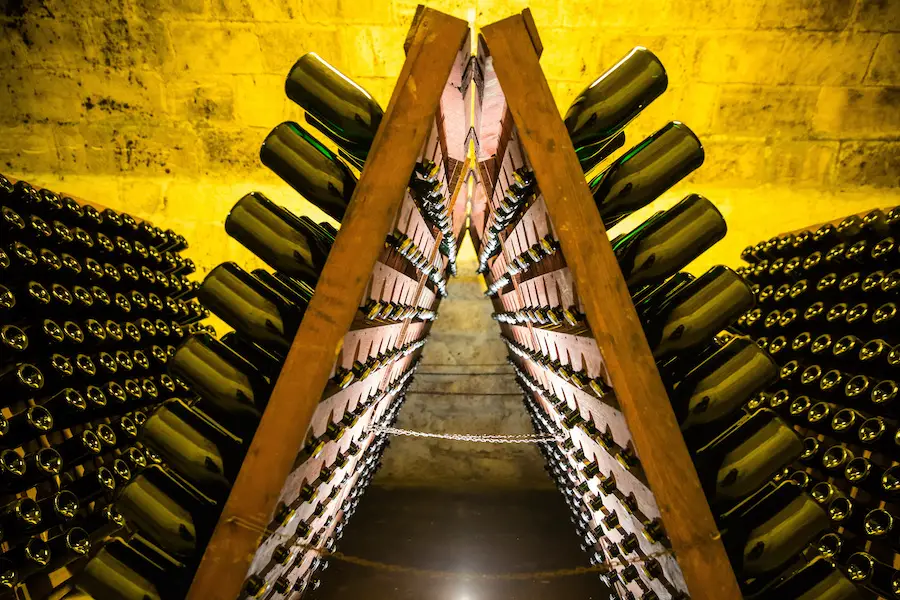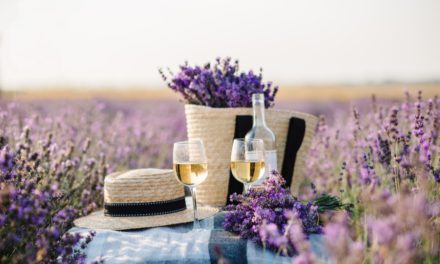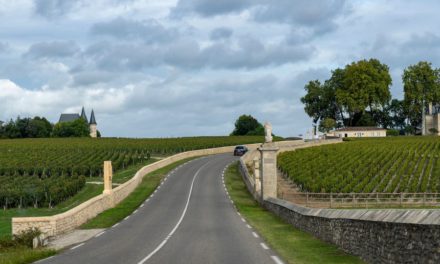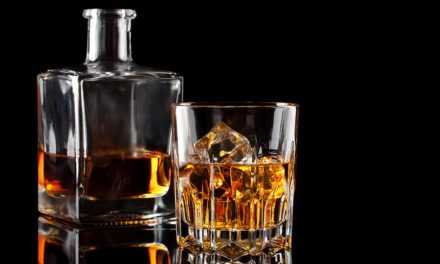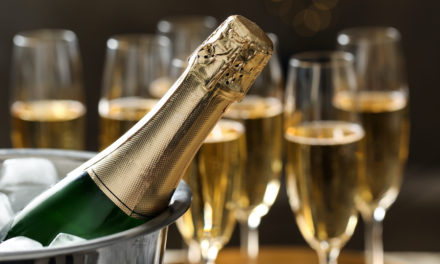You can go through life without drinking wine, but you can’t do the same with Champagne. I say this because, Champagne is usually present at almost every special occasion in life, weddings, new year’s, graduations, anniversaries, birthdays, etc. So, you better know the basics and look like a pro.
As you may know Champagne is the most famous sparkling wine in the world and it is renowned for its luxurious taste and delicate bubbles. Before we begin, If you want to know everything about Champagne, for example where it was created or how it is made?, you should read the article 8 facts you didn’t know about Champange.
Like much of French etiquette, Champagne has its own proper way of serving and drinking it. First things first, let’s start with how to serve it.
What type of glass should I use to drink champagne?
The best way to drink Champagne it’s in a pear-shaped or tulip-shaped cup, i.e. tall and wide enough to allow room for the bubbles and narrow at the top to preserve the aromas. Look at the picture to get an idea.
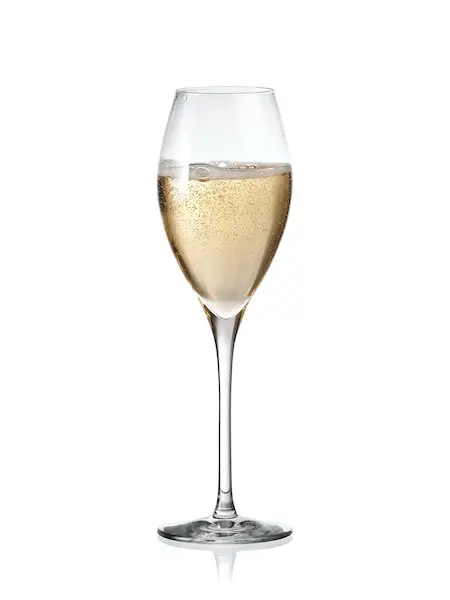
An interesting fact is that even although CO2 is created during fermentation, the bubbles, are not released until the moment of serving, which means that they are produced inside the glass. You can verify this, the next time you open a bottle, look at it, there are no bubbles inside. This is due to impurities and imperfections present in the glass.
How to serve champagne?
Whether you have seen it or experienced it yourself you may have noticed Champagne is to be served chilled. According to Champagne producers and distributors, the best serving temperature is around 8 and 10 ºC (46 – 50ºF), a rule of thumb is that, once taken out of the fridge it should be between 1-4ºC (33.8 – 39.2ºF). Just wait a couple of minutes for it to reach its optimum temperature.
Once you are ready to open the bottle, pick it up, remember to never point it to your face or anyone else’s, or anything fragile. Then is time to remove the foil, then, keeping your thumb on the cork, completely untwist the wire hood, and finally, firmly grasping the cork and wire hood with one hand, twist the bottle (not the cork) with the other. The cork should come out easily.
Once the bottle has been opened, Champagne, like most French wines, should be served without leaning and without picking up the glass, also it should be poured in pairs, slowly, until 2/3 of the volume of the glass. This is done to allow the bubbles to express themselves and give way to the aromas. All that remains is to taste it.
Don’t forget that, as with most fresh wines, it is good etiquette to hold the wineglass by the leg to prevent your hand from warming the Champagne.
How long can a bottle of champagne be kept open?
Sometimes, we want to drink a glass of champagne, but we don’t want or can’t finish the whole bottle. So, after opening the bottle, it can be kept for 2 or 3 days, if after pouring the glass, we close it immediately with a champagne stopper. In the following picture you can see an example of a stopper in the upper right corner.
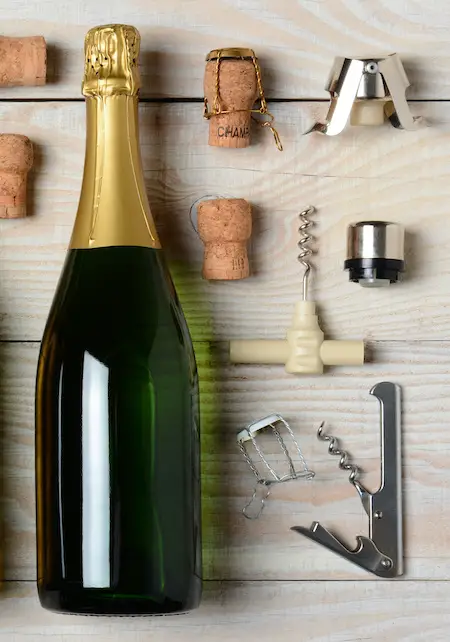
How long does champagne last in the cellar?
Traditionally, champagne is a wine that is sold ready to drink as it is, like a young wine, in any case if you have a taste for a slightly mature wine, you can store it accordingly for the maximum date indicated by the producer in the label.
How to store champagne?
Like most of wines, Champagne needs to be stored in a dark, ventilated place at a temperature between 10 -15ºC (50 – 59ºF). If possible, it is recommended to aim for a humidity between 60% and 80%. Thus, it is not recommended to put champagne in the fridge unless it is to be cooled for a couple of hours before serving it.
Let’s see. We have already discussed how to serve, to drink and store Champagne. Now it only takes to know how to choose a bottle of Champagne.
Like any other beverage or delicacy, I can’t tell you exactly what to choose as this would depend on your taste, budget, and occasion. But. Here are some guidelines to keep in mind:
What is the alcohol content of Champagne?
The alcohol content of Champagne is +/- 12% and is determined by its specifications. Meaning you won’t find Champagne with a level of alcohol significantly different from that indicated.
How do I know the year of the Champagne?
I know that commonly in wines, their year is indicated in the bottle. But an important characteristic of Champagne, is that, normally is not “Millésimés”. This means that while other wines, indicate the vintage year like 2001 for example, Champagne does not because it is usually a blend of different years, Crus and grape varieties. Producers do this in order to maintain the same properties year after year in terms of taste, aromas, etc. But it must be said that there are Champagnes with a year and is just in the case where that vintage year was particularly great.
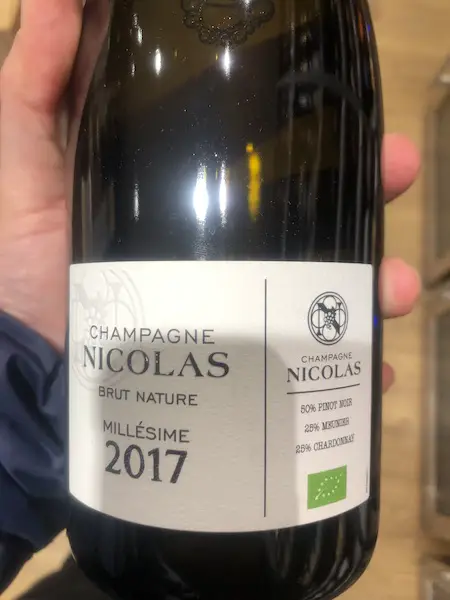
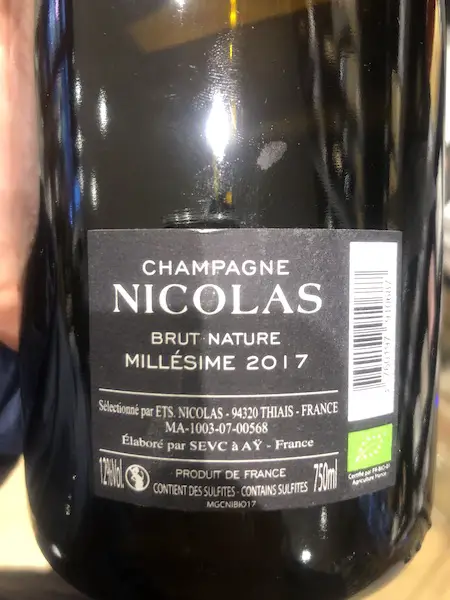
What types of Champagnes are there in France?
First, we should clarify what is the place of Champagne within the big family of French wines. In the article French Wine Basics: Types of wine according to the French we talked about the different types of wines that exist in France, including the effervescent wines where the champagne is included. Check it out if you want to know more. But just so you know, this are divided according to the amount of CO2 per litre, and within the division, “mousseux”, we find the famous Champagne wines. With a quantity of more of 4 grams of CO2 per litre.
Keep in mind that if you find another bottle of “mousseux” wine that comes from France but not Champagne, even if it is produced with the same type of traditional bottle fermentation methodology, it will be called “Crémant”, not Champagne.
But you would say, “but wait a minute Erick, I have noticed that in a Champagne label they classified it in Brut, Dry, Sec, etc”. And you are right.
What is the difference between Brut, Dry, Sec, etc. Champagne?
We can subcategorize it according to the amount of residual sugar per litre. Which is what you have seen in the supermarket or you wine shop, according to the Comité Champagne, it is classified in:
- “Brut nature”: less than 3 grams of sugar per litre.
- “Extra Brut”: between 0-6 grams of sugar per litre.
- “Brut”: less than 12 grams of sugar per litre.
- “Extra Dry”: between 12 – 17 grams of sugar per litre.
- “Sec”: between 17 – 32 grams of sugar per litre.
- “Demi-sec”: between 32 – 50 grams of sugar per litre.
- “Doux”: more than 50 grams of sugar per litre.
So, if you were wondering how to pair Champagne, this list can guide you, as always choose what you are going to eat first, and then choose the Champagne, always try to find a Champagne that complements the food, and not the other way around.
Cheers!

